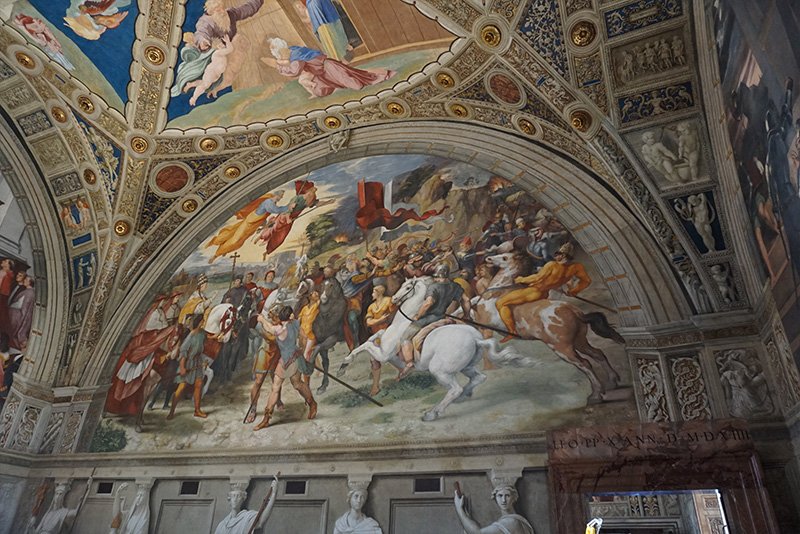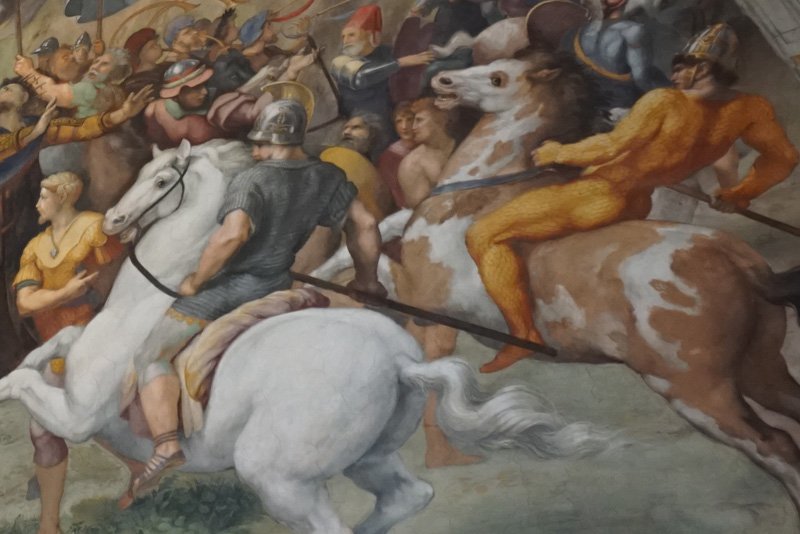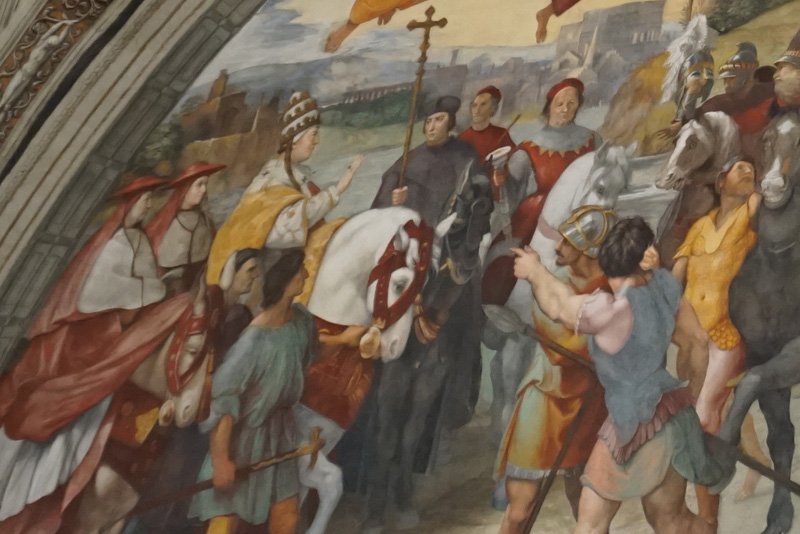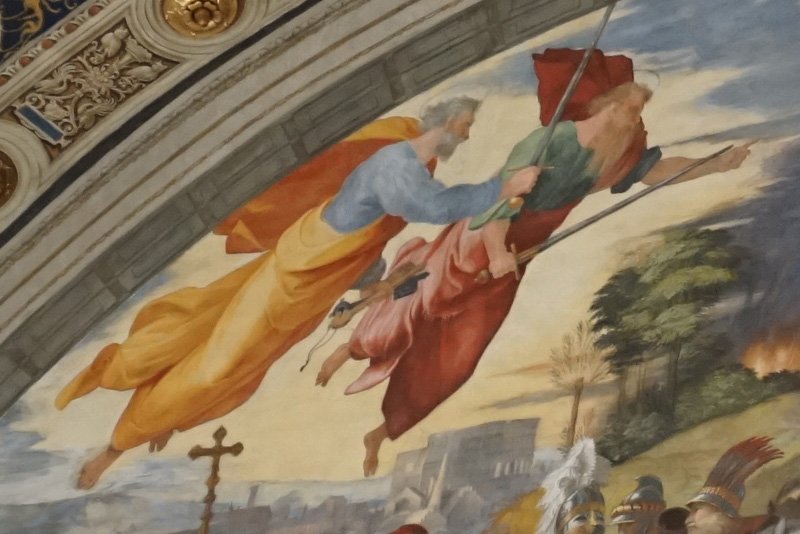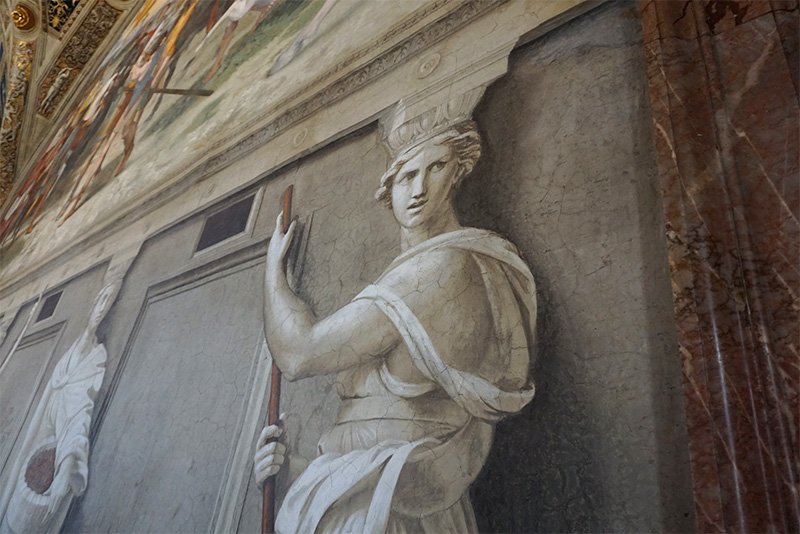Fire in the Borgo
Located in the The Fire in the Borgo room or the Stanza dell’incendio del Borgo, “The Fire in the Borgo is a painting created by the workshop of the Italian Renaissance artist Raphael between 1514 and 1517. Though it is assumed that Raphael did make the designs for the complex composition, the fresco was most likely painted by his assistant Giulio Romano.” [read more…]
“According to the Liber Pontificalis the Fire in the Borgo, which gives its name to the room, broke out in the year 847 in the neighbourhood in front of St Peter’s basilica. Conferring his solemn blessing from the Loggia of the Blessings, Leo IV (pontiff from 847 to 855) miraculously extinguished the fire, thus saving the church and the people.” [read more…]
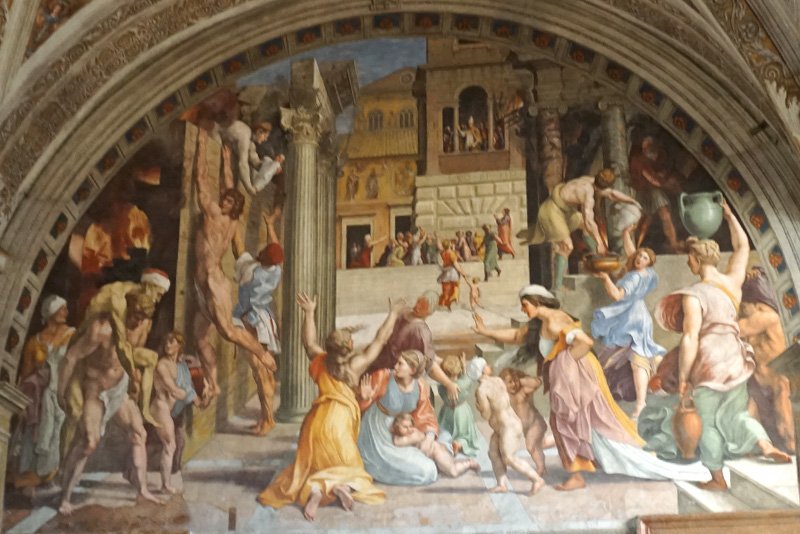
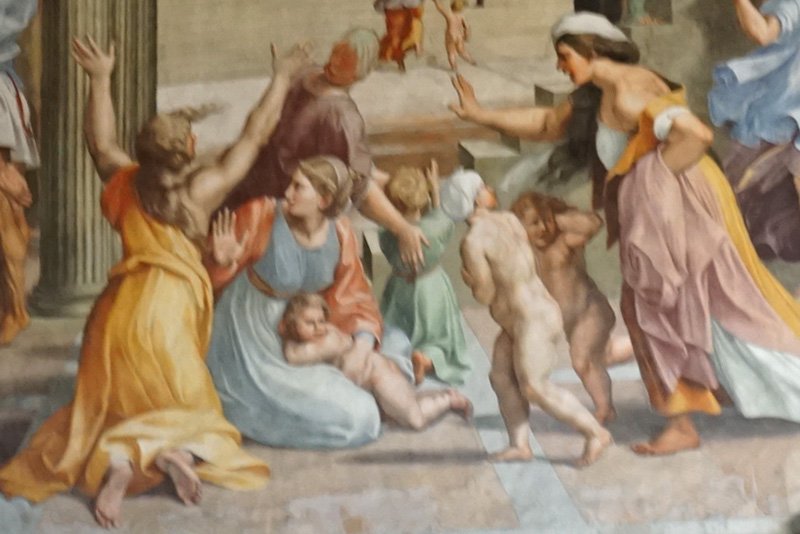
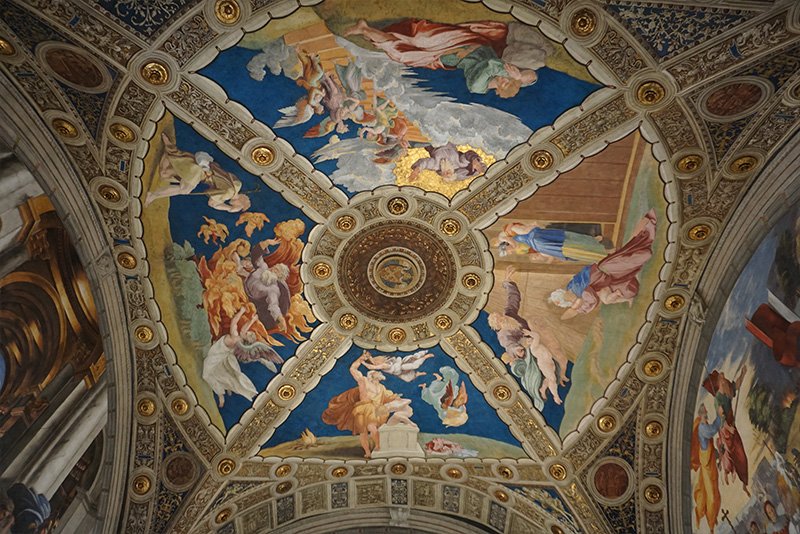
Crowning of Charlemagne
Also located in the Stanza dell’incendio del Borgo, “The crowning of Charlemagne, which took place in St Peter’s on Christmas night in the year 800, forms the foundation of the Holy Roman Empire. It is quite likely that the fresco refers to the concordat drawn up between the Holy See and the kingdom of France in 1515, since Leo III (pontiff from 795 to 816) is in fact a portrait of Leo X and Charlemagne that of Francis I.” [read more…]

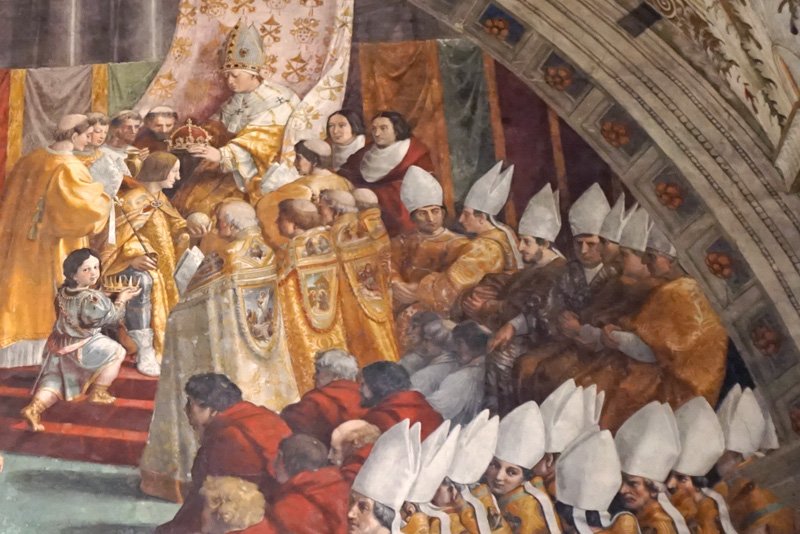
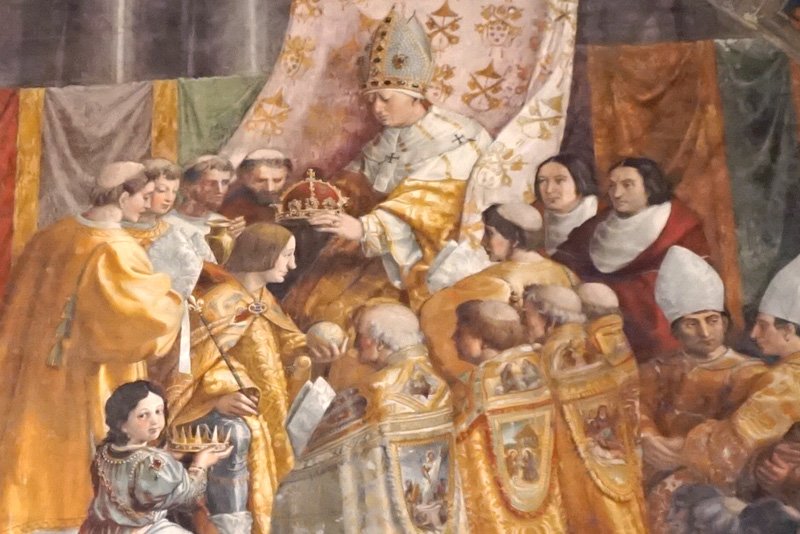
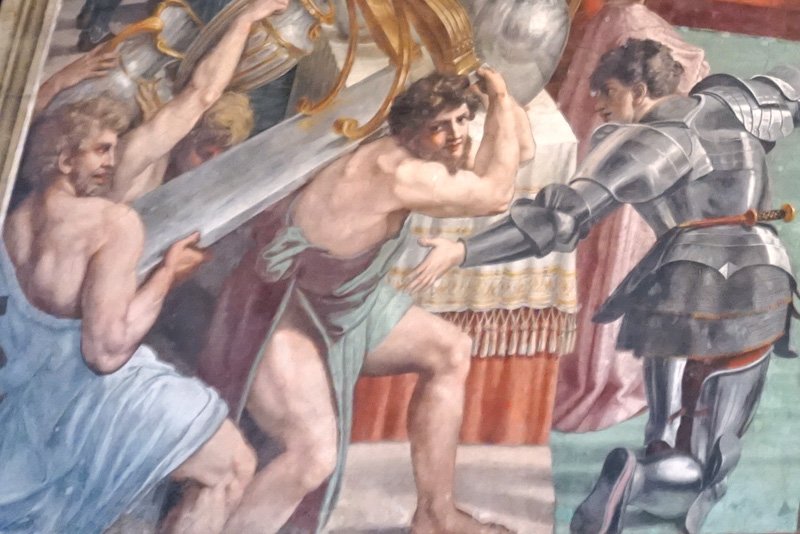
Encounter of Leo the Great with Attila
Located in the Room of Heliodorus or Stanza d’Eliodoro, the Encounter of Leo the Great with Attila is the last fresco painted in this room. It was completed after the death of Julius II (pontiff from 1503 to 1513), during the pontificate of his successor Leo X (pontiff from 1513 to 1521). In fact the latter appears twice in the same scene, portrayed in the guise of Pope Leo the Great and as cardinal.
According to legend, the miraculous apparition of Saints Peter and Paul armed with swords during the meeting between Pope Leo the Great and Attila (452 A.D.) caused the king of the Huns to desist from invading Italy and marching on Rome. Raphael situates the scene at the gates of Rome, identified by the Colosseum, by an aqueduct, an obelisk and other buildings, even if in fact the historical event took place in the north of Italy, near Mantua.” [read more…]

